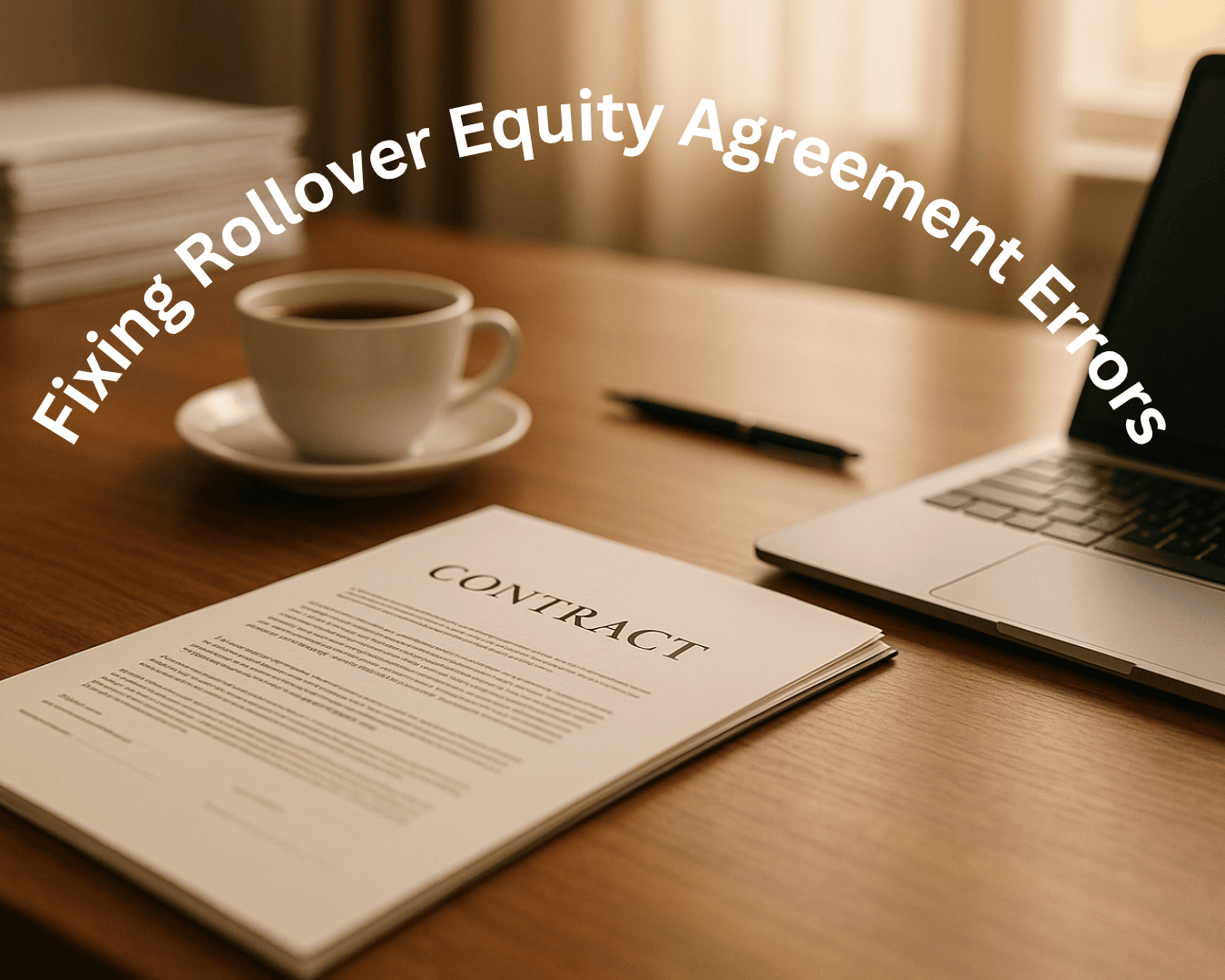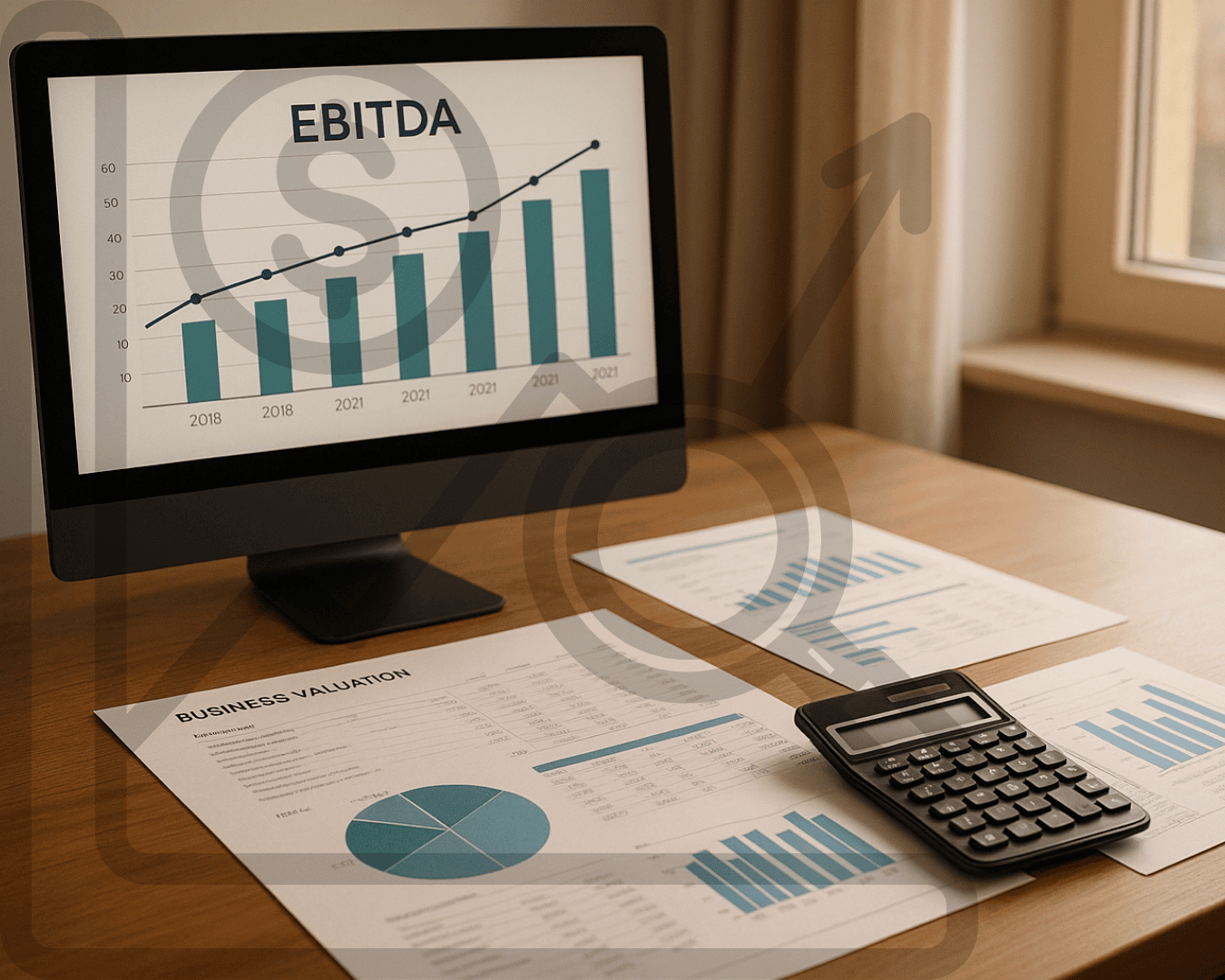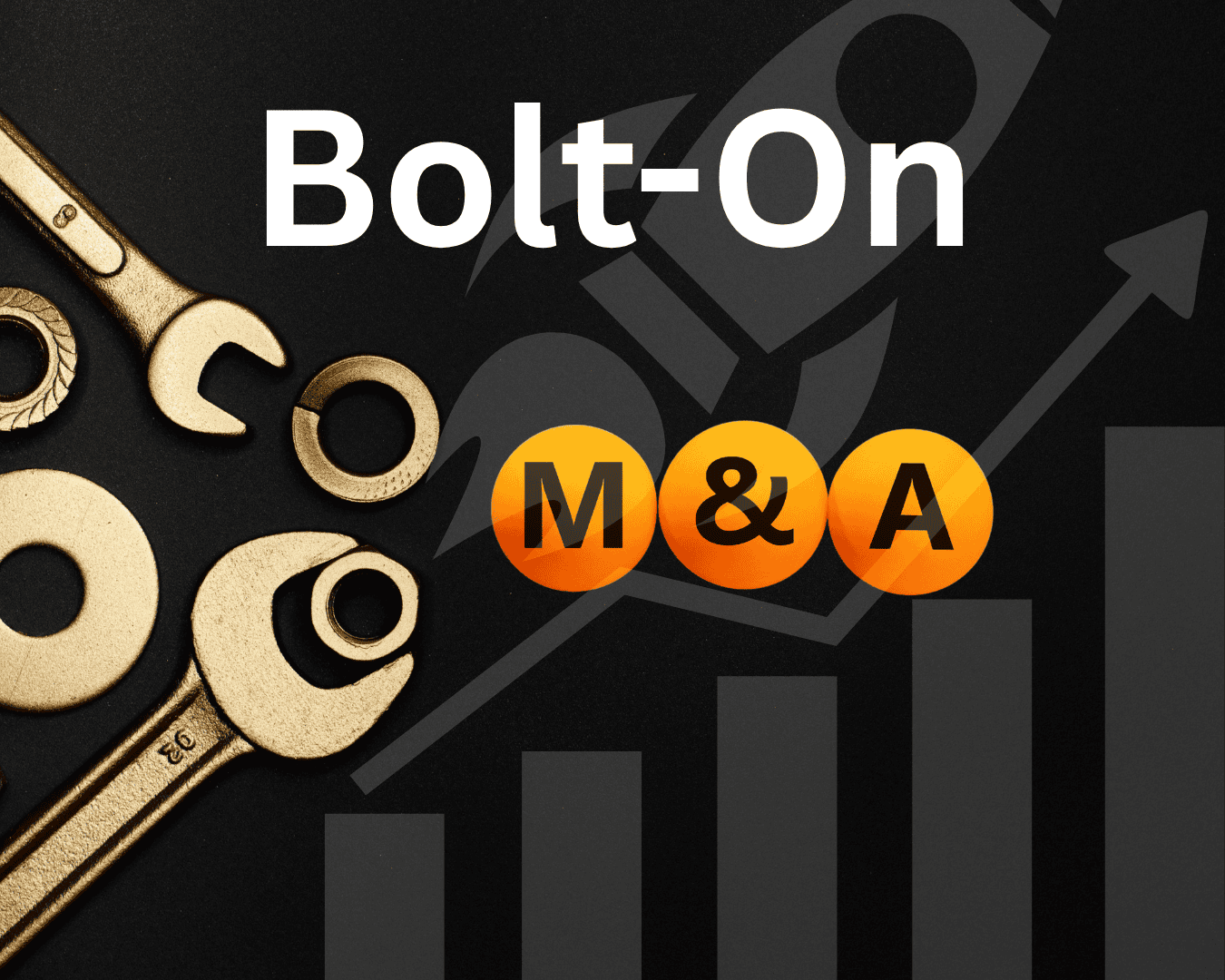Cash flow forecasting is a critical process in business acquisitions, helping buyers, sellers, and investors make informed decisions. It involves predicting cash inflows and outflows to assess financial viability, determine fair pricing, and secure funding. Accurate forecasts reduce risks, highlight opportunities, and guide post-acquisition planning.
Key insights include:
- Forecast Types: Short-term (up to 30 days), medium-term (1 month–1 year), and long-term (1–5 years).
- Methods: Use historical data, scenario analysis, and sensitivity analysis to predict cash flow.
- Recurring vs. One-Time Flows: Distinguish sustainable cash flows from irregular events for clearer insights.
- Validation: Regularly refine forecasts with real-time data, variance analysis, and industry benchmarks.
- Technology: AI-powered tools improve accuracy by up to 95%, automating data integration and scenario testing.
Accurate cash flow forecasting ensures better acquisition outcomes and supports long-term growth. By leveraging reliable data and advanced tools, businesses can make smarter, data-driven decisions.
How to Create Financial Projections for an Acquisition (new Guide!)
Main Cash Flow Forecasting Methods for Acquisitions
When assessing potential acquisitions, buyers need dependable ways to predict how cash will move through the target business. Accurate forecasting combines a look back at historical data with forward-looking projections, all while accounting for the uncertainties that come with any transaction.
Using Historical Data and Growth Projections
Forecasting cash flow often starts with analyzing historical data - looking at revenue patterns, expense trends, and seasonal fluctuations. By studying cash collection cycles, sales behaviors, and cost variations, buyers can establish a solid foundation for anticipating future inflows and outflows.
For sales revenue projections, historical sales trends and seasonal patterns are vital. Similarly, projecting operating expenses benefits from using past data while factoring in expected changes, such as inflation, new business initiatives, or staffing adjustments. Combining these historical insights with anticipated changes creates a more accurate view of future cash flow.
Interestingly, a survey by Blackline revealed that 49% of finance professionals feel their cash flow data is unreliable. This highlights the need to thoroughly analyze historical data before making acquisition decisions.
Scenario and Sensitivity Analysis
While historical data is helpful, scenario and sensitivity analyses bring additional depth to forecasts. Scenario analysis examines possible futures by adjusting all input variables simultaneously, while sensitivity analysis zeroes in on how individual factors influence outcomes. A common starting point for scenario analysis is creating three cases: base (most likely outcome), worst (negative changes in key variables), and best (upside potential).
For example, when evaluating a software company acquisition, scenarios might include optimistic, pessimistic, and most likely growth projections based on varying market conditions. Adjusting variables like market demand or regulatory changes helps buyers prepare for a range of possibilities.
Sensitivity analysis complements this by isolating the impact of single variables. For instance, it might show that changes in customer retention have a bigger effect on cash flow than similar shifts in acquisition costs. This approach helps identify which factors carry the most weight in shaping cash flow outcomes. Together, these techniques improve planning, reduce risks, and provide a clearer picture of potential returns or losses.
Recurring vs. One-Time Cash Flows
Separating recurring cash flows from one-time events is another crucial step in forecasting. Recurring cash flows - such as subscription revenues, regular customer payments, predictable operating expenses, and routine maintenance costs - highlight the business's sustainable earning potential. These are the most reliable indicators of what buyers can expect over time.
On the other hand, one-time cash flows come from unusual events like insurance payouts, asset sales, or legal settlements. While they can impact the overall financial picture, they don’t reflect the business's ongoing operational performance. For instance, a business might seem profitable if a large portion of its cash flow stems from a one-time event rather than its core operations.
To ensure accurate forecasts, each cash flow item should be examined to distinguish between recurring revenue and one-time gains or expenses. This is especially important when reviewing purchase orders, contracts, and supplier payment terms to estimate cash outflows for accounts payable. Identifying which obligations are tied to ongoing operations versus one-time events ensures a clearer financial outlook for post-acquisition planning.
How to Build and Validate Cash Flow Forecasts
Building and validating cash flow forecasts is a critical step in making informed acquisition decisions. This process involves gathering reliable data, constructing a solid model, and validating it regularly to minimize risks and guide smart investments.
Data Sources for Forecasting
To create accurate cash flow forecasts, you need access to dependable financial data. The target company's financial records are the foundation here. This includes historical sales figures, expense reports, and existing cash flow trends. Bank statements provide a clear picture of cash movements, while ERP systems offer operational insights that highlight key business drivers.
External data adds another layer of depth. Industry benchmarks help verify whether projected growth rates and expense patterns align with broader market trends. Additionally, factors like economic conditions, regulatory shifts, and technological developments play a significant role in shaping cash flow and should be factored into the analysis.
Management projections also contribute valuable insight, especially regarding future product launches, vendor relationships, and strategic goals. However, these projections can sometimes lean toward optimism. To ensure reliability, compare their assumptions against market realities and historical performance.
Other useful data includes accounts payable and receivable information, which helps predict when cash will flow in and out. Budget forecasts and free cash flow estimates from different business units provide a broader perspective on overall cash generation.
Once you’ve gathered the data, the next step is to turn it into a structured forecast model.
Forecast Model Development
The starting point for building a cash flow model is defining its purpose. For acquisitions, the focus is often on medium-term projections that support investment decisions and funding strategies. This level of detail is different from short-term cash management.
A well-constructed model separates operating cash flows - such as revenue and core expenses - from non-operating items like capital expenditures or asset sales. This separation ensures clarity and makes it easier to test different scenarios. Linking the forecast to the balance sheet is another key step. It helps catch inconsistencies early and allows for scenario testing, where you can see how various conditions might affect cash flow.
Effective forecasting combines two methods. The direct method tracks actual cash transactions for a clear view of cash movements. Meanwhile, the indirect method starts with projected net income and adjusts for non-cash items and changes in working capital.
Once the model is in place, validation and ongoing refinement are essential to maintain accuracy.
How Analysts Improve Forecast Accuracy
Experienced analysts understand that the quality of a forecast depends on the strength of its assumptions. Kirk Kappelhoff of Drivetrain emphasizes this point:
"The quality of your cash flow forecast is only as good as the assumptions that underpin it. Top CFOs create DSO-based processes by customer that are continuously tested, validated, and refined, rather than treating them as fixed truths."
Analysts ensure their assumptions are well-reasoned, clearly documented, and informed by input from seasoned professionals across departments.
The best forecasts aren’t static. Analysts use rolling forecasts, updated weekly, to maintain a real-time view of liquidity. This approach allows for quicker decision-making in fast-changing markets.
Variance analysis is another powerful tool. Instead of seeing missed forecasts as failures, elite finance teams treat them as opportunities to learn and refine their models, leading to better accuracy over time. Testing assumptions against industry benchmarks further strengthens the process.
Statistical techniques, like regression analysis of historical data, can add precision. However, the human touch remains irreplaceable. As Alberto Hernandez-Martinez from J.P. Morgan explains:
"The 'special sauce' of forecasting is the human element: knowing how to interpret the data and anticipate market uncertainty".
Finally, AI tools can enhance forecasting accuracy, but their success depends on thoughtful implementation and a commitment to maintaining analytical rigor.
sbb-itb-a3ef7c1
Benchmarks and Warning Signs for Cash Flow Forecasts
Evaluating cash flow forecasts against industry norms and spotting potential red flags is critical when making acquisition decisions. By benchmarking and assessing risks, you can avoid costly mistakes and make informed choices.
Comparing Against Industry Standards
Industry benchmarks act as a reality check during acquisition analysis. They help determine if a target company's projections align with market norms or if the expectations are overly optimistic. As Kirk Kappelhoff from Drivetrain puts it:
"Cash flow benchmarking isn't about conformity; it's about reality-testing your assumptions."
For instance, examining ratios like the Cash Conversion Cycle (CCC) helps assess whether a company’s working capital needs match industry standards. Another key metric is Days Sales Outstanding (DSO). Take an office furniture retailer with $40,000 in accounts receivable and $240,000 in quarterly sales - its DSO would be 15 days. While this might seem reasonable, it exceeds the retail industry average of about 7 days, hinting at potential collection challenges.
A cash flow to current liabilities ratio above 1.0 is usually a sign of effective sales-to-cash conversion. If a company consistently falls below this level, it could indicate liquidity issues that might hurt post-acquisition performance.
Free Cash Flow (FCF) benchmarks are another important tool. They reveal a company's ability to generate cash after covering capital expenditures. Falling significantly below industry averages could mean the company may struggle to fund growth or manage debt without external help.
Breaking down cash flow performance by business segments through variance analysis adds another layer of insight. This detailed approach can uncover discrepancies that broader comparisons might miss, helping to flag areas that need closer examination during due diligence.
These benchmarks not only provide a performance baseline but also highlight potential red flags that demand attention.
Spotting Red Flags in Forecasts
Identifying warning signs in cash flow forecasts can prevent expensive acquisition mistakes. Poor cash flow management contributes to 82% of business failures, underscoring the importance of thorough analysis.
One red flag is overly optimistic growth projections. Forecasts showing dramatic revenue increases without supporting market data or historical trends should raise concerns. Reliable projections are grounded in historical performance and current market conditions, not wishful thinking.
Inconsistent cash flows are another concern. Unexplained fluctuations in monthly or quarterly cash flows that don’t align with seasonal patterns or market conditions could signal deeper operational problems. Companies with negative or highly volatile cash flows may face fundamental business challenges.
Declining profit margins paired with optimistic cash flow forecasts are another warning sign. If rising costs or competitive pressures are squeezing margins, the ability to generate cash often suffers as well.
Inventory levels also play a role in cash flow accuracy. Excess inventory ties up working capital and may point to production inefficiencies or weak demand. On the flip side, abnormally low inventory could indicate supply chain issues or even aggressive accounting practices.
Speaking of accounting, aggressive practices can distort cash flow performance. Watch for sudden policy changes, unusual related-party transactions, or significant off-balance sheet items that might obscure the company’s true financial health.
Management credibility is equally important. Frequent auditor changes, unethical behavior, or a track record of missed financial projections can cast doubt on the reliability of current forecasts.
Payment timing discrepancies are another issue. If customers consistently pay slower than expected or suppliers demand faster payments, the resulting cash squeeze can disrupt operations.
Interestingly, nearly 90% of treasurers at large companies rate their cash flow forecasting accuracy as "unsatisfactory". This highlights how hard it is to produce precise forecasts and emphasizes the need for conservative assumptions when evaluating acquisition targets.
Lastly, maintaining cash reserves to cover at least three months of expenses - regardless of forecasted cash flow - provides a critical safety net against errors or unexpected market shifts.
Using Technology and Tools for Forecasting
Modern technology has revolutionized cash flow forecasting, turning what was once a tedious manual process into a more efficient and precise operation. With AI-powered tools and integrated platforms, businesses can make smarter acquisition decisions while minimizing the risk of costly forecasting errors.
Tech-Enabled Forecasting Solutions
Technology has reshaped how cash flow forecasting is handled during acquisitions. These platforms automate data collection and integration from multiple sources, reducing errors and improving accuracy. For example, AI-powered forecasting models can lower error rates by as much as 50% compared to traditional methods.
AI-driven forecasting employs advanced machine learning models - like neural networks and ensemble models - to analyze extensive financial datasets. These tools uncover patterns that human analysts might overlook. They also integrate real-time data from ERP systems, CRM platforms, and market feeds, offering a complete picture of a target company’s financial health.
One standout feature of modern forecasting technology is scenario analysis and stress testing. AI can generate thousands of scenarios based on historical trends and market conditions, helping businesses predict how different situations might affect cash flow. This is especially useful when evaluating acquisition targets, as it highlights potential risks and opportunities under varying market conditions.
For example, Clearly Acquired combines AI-powered tools with integrated dashboards to simplify the acquisition process. It offers features like automated NDA deployment, deal management hubs, and custom dashboards that consolidate financial data, making cash flow forecasting more accessible and actionable.
Another major advantage is real-time data integration. Currently, only 15% of finance leaders use real-time data for insights, and just 25% of finance teams can reliably forecast cash flow beyond one month. Technology platforms address this gap by continuously updating data, making real-time insights a critical component of accurate forecasting.
The numbers highlight the growing reliance on these tools. According to the Strategic Treasurer 2021 Technology Survey, 84% of respondents said forecasting is crucial for treasury operations, while 65% of treasury groups listed improving cash forecasting as their top priority. Leveraging these advancements effectively requires adopting best practices.
Best Practices for Using Technology
To get the most out of advanced forecasting tools, companies need to blend automation with strategic oversight. Here are some key approaches to ensure both accuracy and usability.
1. Data Accuracy and Automation: Integrating data from ERP systems, retail partners, and HR systems creates comprehensive forecasting models. Automating these processes eliminates manual errors and ensures forecasts reflect the latest information.
2. System Integration: Choose software that integrates easily with existing systems and can adapt to future needs. Customizable platforms are especially valuable as forecasting requirements evolve.
A real-world example shows the potential impact. Health Care Service Corporation (HCSC) enhanced its forecasting capabilities, reducing working capital by nearly $4 billion. This allowed the company to make earlier investment decisions, boosting short-term returns by $40 million and long-term returns by $140 million.
3. Collaboration Across Teams: Effective forecasting depends on input from multiple departments. Encouraging communication between Accounts Payable, FP&A, IT, and regional controllers ensures no critical data is overlooked. Shared dashboards and real-time updates provided by technology platforms make this collaboration seamless.
4. Continuous Improvement: Regularly measure forecast accuracy to identify and address variances. Establishing a feedback loop helps refine both the systems and the people involved, improving results over time.
The importance of real-time data is emphasized by Lisa Husken from Kyriba, who states:
"If you don't have access to that real-time data, then you're not utilizing the most up-to-date information. Then how could you be as accurate as you could be going out further than four weeks?"
5. API Integration: APIs are becoming a priority for finance teams, with 88% of finance executives focusing on them this year. APIs connect data from ERP systems, treasury management systems, and other sources, enabling more comprehensive cash flow forecasts.
6. Scenario Planning: Regularly run scenarios using different assumptions to prepare for uncertainties. Modern platforms can automatically adjust forecasts based on new data and changing market conditions.
Balancing automation with human oversight is critical. While automation reduces manual errors and effort, human judgment ensures the data aligns with broader business goals and market realities.
Conclusion: How Cash Flow Forecasting Drives Acquisition Success
Cash flow forecasting plays a key role in making business acquisitions successful, transforming potential risks into strategic opportunities. The numbers back this up: 88% of companies described as "insight-driven" have a strong grasp of their cash flow, compared to those that don't utilize real-time tools. Furthermore, 66% of businesses using cash flow tools anticipate growing by at least 10% in 2024. These figures highlight the undeniable link between accurate forecasting and achieving business goals.
But the benefits go far beyond just avoiding financial pitfalls. Accurate forecasting helps businesses plan for future financial needs, allocate resources wisely, and make informed decisions about expansion. It also plays a key role in securing much-needed capital, reinforcing its importance in strategic planning.
Access to reliable forecasts can even improve relationships with financial institutions. For example, 83% of businesses using advanced forecasting tools receive dedicated banking support. This access to funding is critical when navigating acquisitions and managing the complexities of post-acquisition integration.
Given that 82% of business failures are tied to poor cash flow management, accurate forecasting isn't just a nice-to-have - it's essential for survival. Recognizing these risks has led to the rise of AI-driven tools that integrate forecasting into broader financial strategies.
Platforms like Clearly Acquired are stepping up to meet this need by offering AI-powered forecasting and deal management tools. These tools ensure cash flow analysis is embedded throughout the acquisition process - from sourcing and due diligence to securing financing - making it a seamless part of the strategy rather than an isolated task.
Successful acquisitions go beyond simply identifying appealing targets. They require a strong analytical framework to evaluate how those targets will perform under new ownership. By mastering cash flow forecasting, businesses can create acquisitions that lead to sustained growth. To achieve this, companies must invest in advanced tools, embrace technology for greater accuracy, and treat cash flow analysis as a core strategic asset.
FAQs
How can businesses identify recurring cash flows versus one-time cash flows during an acquisition?
To differentiate between recurring and one-time cash flows during an acquisition, pay attention to their frequency and purpose. Recurring cash flows occur consistently and are tied to the regular operations of the business - think monthly subscriptions, rent payments, or payroll expenses. On the other hand, one-time cash flows are irregular and usually stem from specific, unique events like legal settlements, purchasing equipment, or funding special projects.
Reviewing financial statements, contracts, and historical cash flow trends is key to pinpointing which cash flows are dependable and which are unlikely to happen again. This clarity is essential for accurate cash flow forecasting and making well-informed decisions throughout the acquisition process.
How do AI-powered tools enhance cash flow forecasting for business acquisitions?
AI-powered tools improve cash flow forecasting by processing real-time data, spotting patterns in historical trends, and factoring in external influences like industry trends and economic shifts. This approach creates forecasts that are more precise, adaptable, and aligned with the unique requirements of a business acquisition.
Using machine learning and predictive analytics, these tools empower buyers and investors to make smarter decisions, minimize risks, and plan effectively for future financial demands. Such accuracy plays a key role in assessing potential acquisitions and securing lasting success.
Why is it important to use scenario and sensitivity analysis in cash flow forecasting during business acquisitions?
When it comes to cash flow forecasting for business acquisitions, scenario and sensitivity analysis play a crucial role. They let you explore how shifts in key elements - like revenue, operating costs, or interest rates - might affect cash flow. By running these models, you gain insight into potential risks and opportunities.
This method equips investors to navigate uncertainties, weigh both worst-case and best-case scenarios, and make smarter decisions. It’s a practical way to reduce financial risks, ensure a smoother transaction process, and boost the chances of a successful acquisition.








































.png)






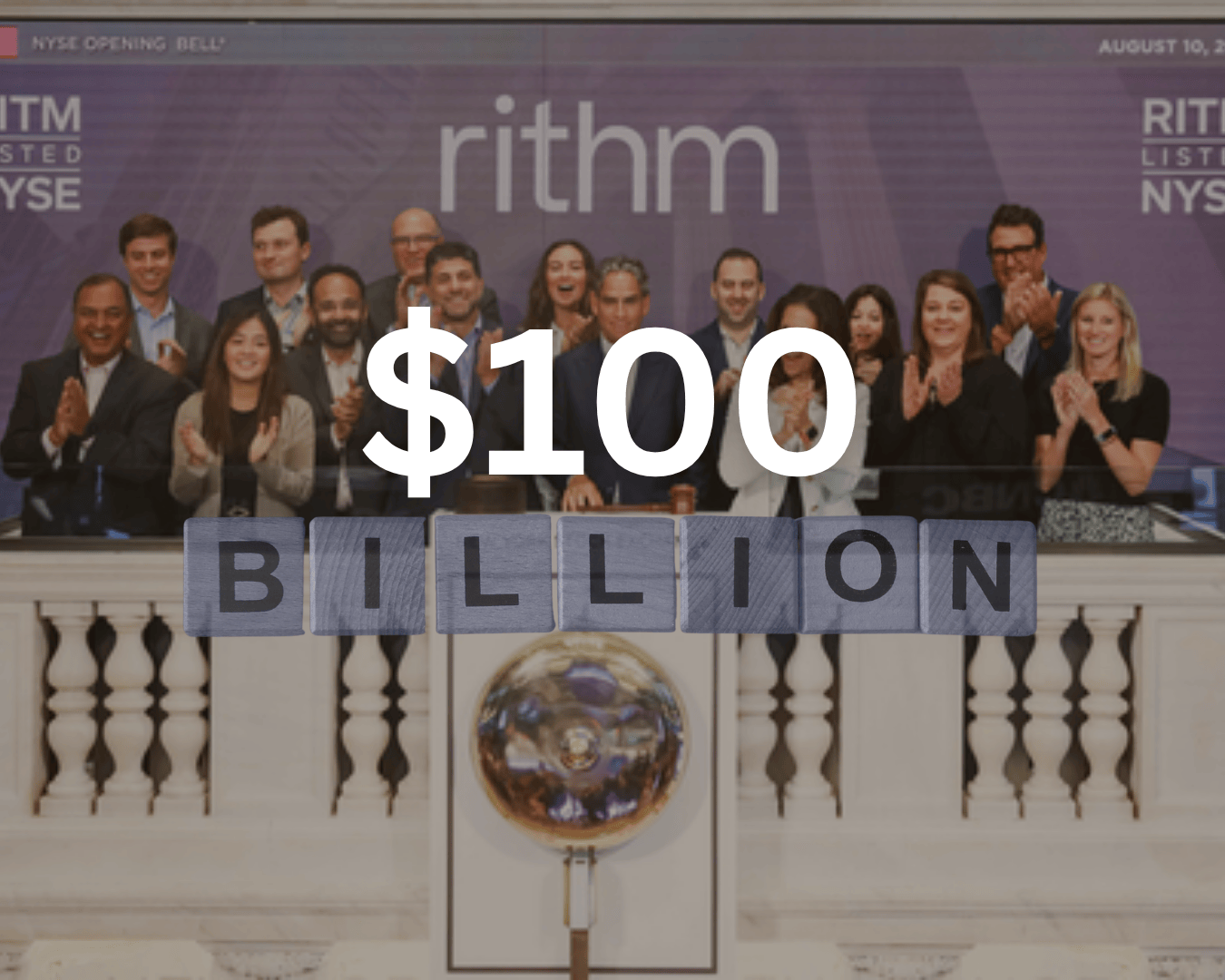















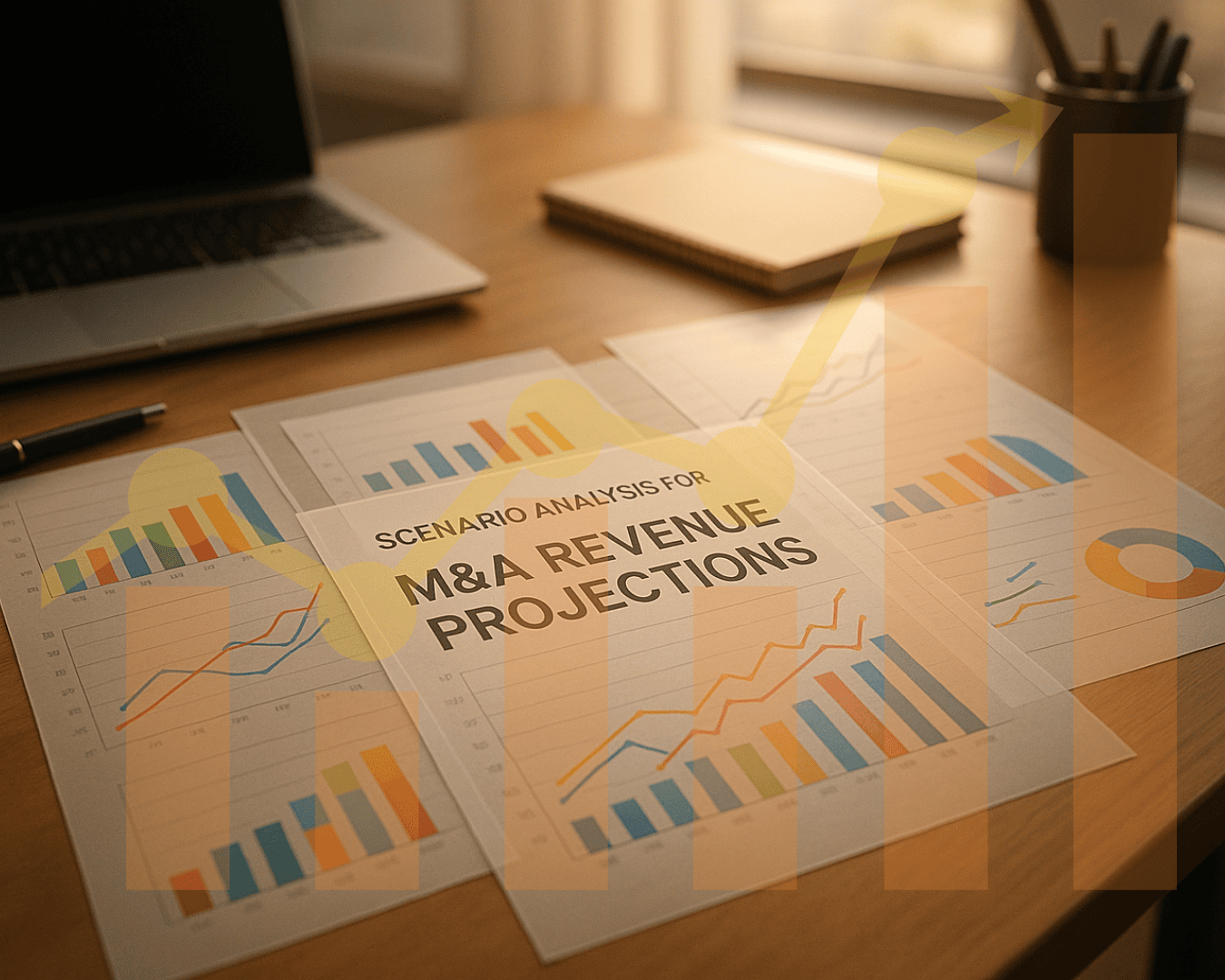





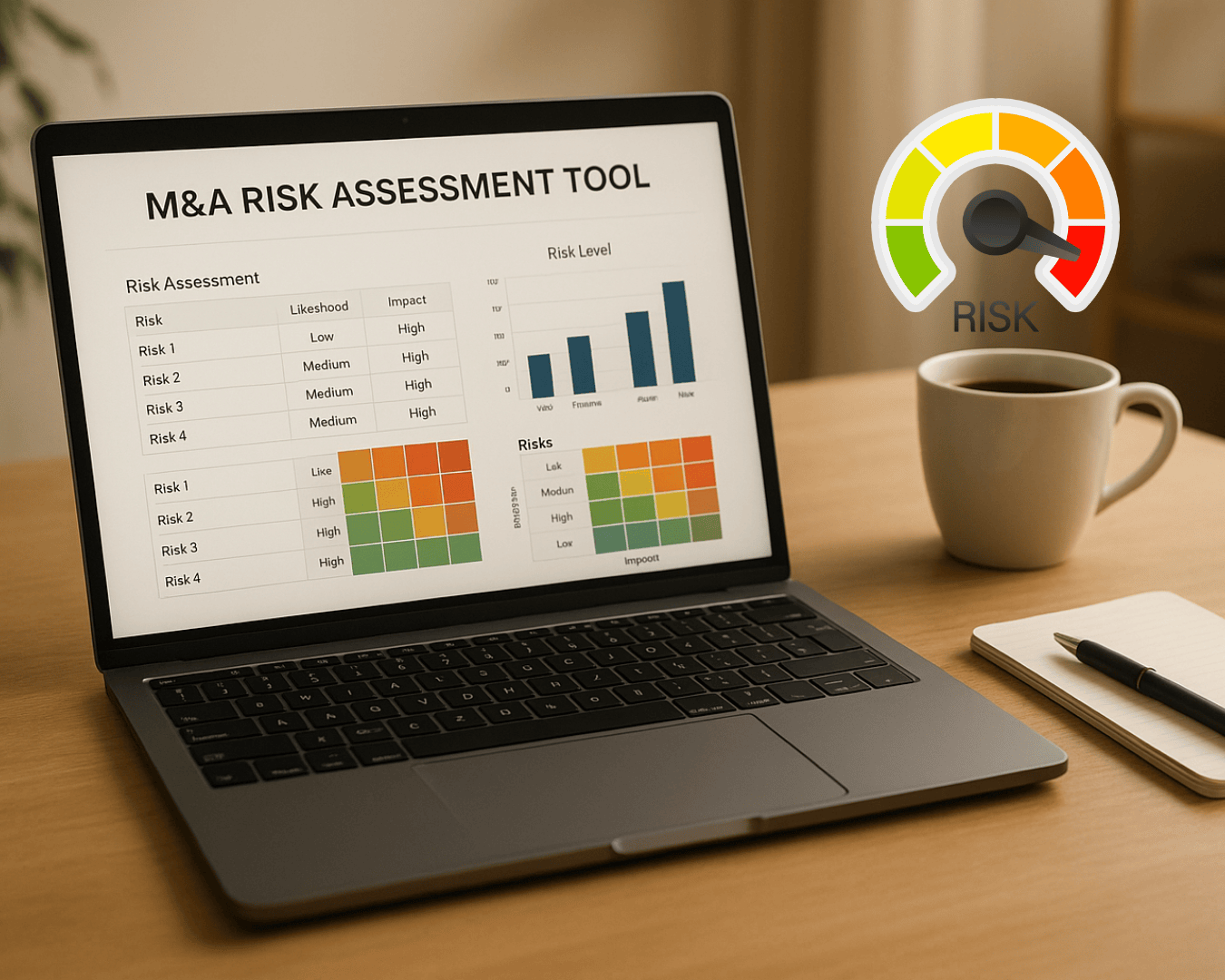











%20Loan%20Application%20Checklist.png)
